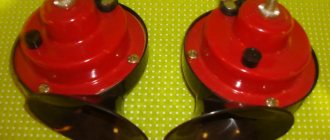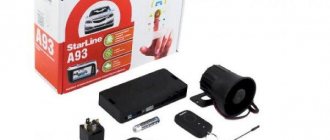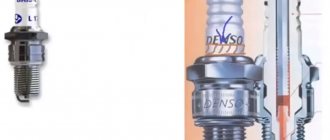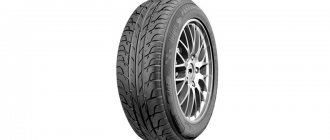One of the most important characteristics of any gasoline or diesel engine is its displacement. Since the appearance of the first internal combustion engines, this characteristic of the engine has been the primary indicator by which one or another power unit is distinguished. For this reason, the concept of “engine displacement” is constantly used in relation to various power plants. On many cars, the engine size is indicated in the form of a special nameplate next to the designation of the model itself. For example, BMW 740 means that it is the seventh series in the model range with an engine capacity of 4.0 liters.
The power characteristics, maximum vehicle speed, etc. greatly depend on the working volume of an atmospheric or turbocharged engine. Moreover, the division of cars into classes, the formation of taxation and the determination of the amount of payment of various fees also takes into account the type of engines and volumes that are installed by the manufacturer for different models/types of vehicles and other vehicles.
We also recommend reading the article about the service life of a modern diesel engine compared to a gasoline engine. From this article you will learn about the main factors and features that affect the service life before the first major overhaul of gasoline and diesel fuel units.
It should be noted that many consumers are not always well aware of what engine displacement actually is. Next, we intend to talk about what makes up the working volume of an internal combustion engine, how to find out the engine size, etc.
Pros and cons of large engine cars
Depending on the engine size, not only the dynamic characteristics change, but also the price of the car. As a rule, a car with a 1.4 liter engine costs 100-150 thousand less than a modification with the maximum engine capacity possible for this model. This does not mean that an engine with larger pistons is significantly more expensive to produce.
Firstly, with a significant increase in acceleration and maximum speed, for safety reasons, suspension and braking system parts with improved characteristics are installed on the same model, which also “cost money”. Secondly, within the framework of existing market trends, the manufacturer, as a rule, makes the most powerful modification the “richest”, equipping it with all possible options. We should not forget about the image component - owning a “charged” version is always prestigious, and you have to pay for it.
In accordance with the tax laws of some countries, an increase in car tax is associated with an increase in engine displacement. In Russia, a different scale has been adopted - the amount of road tax depends on horsepower, although in the general case this parameter is quite closely related to engine size.
Tips for a novice car enthusiast
As already mentioned in the article, from the very beginning you must decide what goals you will pursue when buying a car. If you are buying a car only for driving around urban areas (from work to home and the like), then a small engine will be enough for you. Now let's figure out why. The thing is that medium- and large-displacement engines are very well suited for trips of 100 kilometers or more. You will feel the savings if you roll out this distance every day. But, you see, few of us will travel such long distances every day. Thus, to save money, the best option for you will be a car with a volume of 1.2 - 1.7 liters. If you have firmly decided that you will explore distant territories, then you will like a car with a medium-displacement engine with a volume of approximately 2.4 - 2.8 liters. Such vehicles are capable of doing a lot of work and accommodating a larger number of passengers (for example, a jeep or minibus). Good luck choosing your first car and good luck on the roads!
How to find out engine size?
You will need:
- Automobile.
- Engine.
- Technical certificate.
#1
The displacement of a car's engine is the sum of the working volumes of its cylinders. The units of measurement are both cubic centimeters (cm3) and liters (l.) (1 liter is equal to 1000 cubic centimeters).
When the engine volume must be indicated in liters, when converting units of measurement, rounding is done to a whole number after the decimal point, for example, an engine volume of 1598 cubic centimeters in liters will be equal to 1.6 liters, and, for example, a volume of 2429 cubic centimeters – 2.4 liters.
The power of the car, fuel consumption and other operating parameters directly depend on the size of the engine displacement. When buying a car, you must definitely pay attention to the engine displacement, as this is a very important point. #2
#2
There are “craftsmen” who like to advise unscrewing all the spark plugs and pouring water into the cylinders “to capacity”. According to them, the volume of water placed in them should be the same as the volume of the engine. This method should not be used, as it is just an old joke.
If you buy a used car, the numbers indicated in its registration certificate may not be entirely correct. It is possible that the car was involved in an accident or perhaps some work was carried out on it that affected the engine's performance.
What if it was actually assembled from several cars? The actual engine volume, in these cases, can be found out by looking at the numbers on the cylinder block. This is the value of the working volume. They are indicated at the back with large symbols (you can see them from the pit). You can also find out what size the car’s engine is by looking at the VIN code.
#3
The last method listed is the most reliable. Since the VIN code is indicated on all cars that were produced starting from about 1980. It consists of seventeen characters, among which the Latin letters I, O and Q are not used due to their similarity with the numbers 1 and 0. The first three characters indicate the car manufacturer’s index.
(The first is the country, the second characterizes the manufacturer, and the third indicates the type (car, truck, and others).) From the fourth to the eighth characters inform about the main technical parameters of the car: the model, engine type and size, body type, and so on. The ninth character is the check digit.
It is needed so that the authenticity of the VIN code can be determined. With its help, you can find out whether the car is listed as stolen. The twelfth to seventeenth characters are the car body number.
There are many sites on the Internet with which you can decipher the VIN code and find out not only the engine size of a particular car, but also all other technical characteristics. Moreover, it is absolutely free.
We give a definition
Engine volume is measured not in liters, but in cubic centimeters. Even those who are far from cars and just heard about it from familiar drivers know about this. However, for most, this figure means absolutely nothing, which is a rather sad fact.
Nevertheless, automakers and experts have long introduced a special classification of internal combustion engines by volume. This allows, practically without looking at the documentation, to find out the real potential of the machine and draw conclusions about how much it is worth the money.
What does engine volume mean, and what does this value affect? To answer this question, it is worth remembering how a modern internal combustion engine works, and what causes the movement of its components and mechanisms. The fact is that the engine has several cylinders in which movable pistons are located. A mixture of gasoline vapor and air is injected under pressure into the cylinders. As soon as the mixture enters the cylinders, it is ignited using spark plugs, and the piston moves up or down as the burning mixture expands.
The working volume of a car engine is measured in cubic centimeters, and this is not the volume of the injected mixture. This is the total volume of the combustion chambers.
What does this affect? Based on this figure, several conclusions can be drawn at once, which may seem obvious to many.
A little theory
Engine size plays a big role in car design. For this reason, engineers have introduced special documentation that characterizes a very specific classification of engines according to this indicator and focuses on the ratio of power and volume in the case of modern gasoline and diesel internal combustion engines.
Further classification of engines involves units whose volume reaches no more than two thousand cubic centimeters. Such engines are installed on the vast majority of passenger cars that are currently supplied to the market. If a couple of decades ago we were talking only about atmospheric units, today turbines have also begun to be widely installed. This made it possible to talk about higher powers and technical data, which previously only possessed larger engines.
The most powerful engines are supplied for sports cars and SUVs, as well as for large equipment. Such internal combustion engines are the most voracious and have a lot of weight. Nevertheless, they have a good resource and allow you to move quickly and comfortably in a car whose weight is quite large.
What does displacement affect?
However, we should not forget that big engines have a big appetite. So, if a one and a half liter gasoline power unit in the urban cycle consumes an average of 9-10 liters of fuel per 100 km, then a two-liter engine will require 12-13 liters of fuel. On the highway the difference is less, about 6.5-7 liters versus 8-8.5.
The reason is that while idling, a larger engine also consumes more gasoline, while while driving it allows you to accelerate the car faster to the required speed, i.e. The operating time in uneconomical mode is reduced.
The formula “more volume – more power” is true for passenger cars. Trucks take a slightly different approach
Large volume does not necessarily mean a "herd of horses" under the hood, since for these cars the more important characteristic is high torque in all crankshaft speed ranges
Thus, the KamAZ-54115 tractor has a power unit volume of 10.85 liters (the volume of only one cylinder is comparable to the displacement of a small car engine), while its power is only 240 hp. For comparison, the BMW X5 with a three-liter diesel engine develops 218 hp. In fairness, it is worth noting that the latest generation KamAZ heavy trucks are equipped with more modern engines with a volume of 11.76 liters and a power of up to 400 hp.
Compression ratio and octane number of gasoline
It is known that each gasoline engine has a certain octane number of fuel.
The octane number of gasoline determines its knock resistance.
The higher the compression ratio and compression, the higher the octane number the fuel must have. For example, low octane fuel will cause detonation in a high compression engine because... will ignite prematurely. If the compression and compression are low, and high-octane fuel is used, then the engine will not be able to achieve full power, because Higher octane fuels typically burn at a lower temperature and more slowly. Due to the combustion rate being lower than the calculated one, it may happen that during the exhaust phase, a still burning mixture will be released through the valve instead of exhaust gases. Consequently, engine parts will overheat, especially the valves, and they may burn out.
Let's look at engines with different compression ratios and recommended fuel octane numbers:
| Compression ratio | Octane number |
| 5,5 – 7 | 66 – 62 |
| 7 – 7,5 | 72 – 76 |
| 7,5 – 8,5 | 76 – 85 |
| 10 | 92 |
| 10,5 – 12,5 | 95 |
| 12 – 14,5 | 98 |
As you can see, the compression ratio is an important engine parameter. Engine power largely depends on it. The octane number of the fuel and other parameters are also directly related to the compression ratio. It makes sense for every car enthusiast to understand this concept and have an idea of its meaning.
How to increase horsepower in a car
You can increase the power of your car in several ways. Machine modernization options can further ensure fuel economy, increase the service life and performance of the fuel system.
More volume
One of the simplest and most effective methods to increase the number of horsepower. In this case, the edges of the cylinder block liners are bored, increasing their internal diameter, and pistons of larger diameter are installed. Thus, the engine displacement is increased, horsepower increases, and torque also increases.
Thanks to this improvement, fuel consumption is reduced. For further operation, it is necessary to use only gasoline with a high octane number (95-98).
Modernization of the intake system
Such changes are used as an addition to the global modernization of the car. Improving the intake system, as an independent method, gives too little increase in horsepower.
To refine the intake system, replace the installed air filter with a zero filter, and install a larger throttle valve. They also replace the receiver with a larger one and remove the intake manifold.
Chip tuning
The principle of improvement in setting up the calibration of the electronic control unit firmware. This is the most effective method to increase vehicle power and significantly reduce fuel consumption. Such work is carried out only by specialists at the service station.
see also
Engine stalls when cold
- 8 0 2k
Wear of liners
- 41 1 48k
Valve cover and cylinder head sealant
- 77 2 107k
Blue smoke from the exhaust
- 86 0 57k
Interactive engine cooling system diagram
- 66 0 107k
The working volume of the cylinder is the volume located between the extreme positions of the piston movement.
The formula for calculating a cylinder has been known since school curriculum - the volume is equal to the product of the area of the base and the height. And in order to calculate the engine volume of a car or motorcycle, you also need to use these multipliers. The working volume of any engine cylinder is calculated as follows:
Recipe for Homemade Chocolate Balls for Breakfast:
The hardest part is grinding the flakes into flour. My oatmeal is from Mistral. Grind it in a blender for a couple of minutes. We also grind the almonds with a blender. Also in pain.
Then everything is very simple! Combine ALL ingredients and knead the dough. You may need a little more yogurt (I used thick honey and added about 1 tsp more yogurt). The dough should be dense, but not crumble. It needs to be formed...
... these are the balls. We pinch off a piece of dough, roll it into a ball and place the balls on a baking sheet covered with parchment or a silicone mat or a Teflon napkin. Involve children in the process of rolling balls! They may turn out to be of different sizes, but how much joy and pride the child will receive!!! And breakfast (or lunch or even a snack) will become much tastier!!!
Bake the balls in an oven preheated to 180 degrees for 15 minutes. 5 minutes after you put the baking sheet in the oven, start stirring the balls every 3 minutes.
Eat as you should with milk, kefir or just like that! My son liked the last option the most!!! Bon appetit everyone!!!
Internal combustion engine structure
Despite the variety of types and designs of internal combustion engines, the principle of its design remains virtually unchanged on any vehicle. Of course, individual design elements may differ greatly on different engines, but the main components and components are very similar to each other.
So, an internal combustion engine consists of such structural components.
- The cylinder block (BC) is the “shell” of the CPG and the entire engine as a whole, including the cooling system jacket.
- The crank mechanism, also known as the crank mechanism, is a unit in which the linear motion of the piston is converted into rotational motion. It consists of a crankshaft, pistons, connecting rods, a flywheel, as well as plain bearings (liners) on which the crankshaft and connecting rod mountings rest.
- The gas distribution mechanism (GDM) is a system for supplying the fuel-air mixture to the cylinders and removing exhaust gases. It consists of camshafts, valves with rocker arms or rods, and a timing belt, thanks to which the entire system operates synchronously with the crankshaft speed.
- The power system is a unit in which the fuel-air mixture is prepared, which is then supplied to the combustion chambers. Depending on the design, the fuel supply system can be carburetor (one injector per engine), injection (injectors are installed in front of the intake valve of each cylinder), or direct injection (the injector is installed inside the combustion chamber). Includes a fuel tank with filter and pump, carburetor (optional), intake manifold, injectors, injection pump (in diesel engines), air intake with air filter.
- Engine lubrication system - ensures the supply of lubricant to each of the friction units, as well as to areas that require additional cooling (for example, to the lower part of the pistons). It consists of an oil pump connected to the crankshaft, a system of tubes and channels leading to friction pairs, an oil filter, and an oil pan. Depending on the design, engines with a “dry” and “wet” sump differ. In the former, the container for collecting engine oil is located separately, in the latter - directly under the engine.
- Ignition system - needed to ignite the fuel mixture in the combustion chamber. It is used only on gasoline engines, since diesel fuel ignites itself from compression. Includes spark plugs, high-voltage wires, ignition coils, as well as a distributor (distributor) on older type engines. In modern engines, the ignition system does without a distributor and even without wires: a “coil-on-plug” design is used.
- Cooling system – takes care of maintaining the specified operating temperature of the engine. The liquid cooling system consists of a coolant (coolant, antifreeze), a cooling jacket (a network of chambers and channels inside the cylinder block), a heat exchanger (cooling radiator), a water pump and a thermostat.
- The electrical system is the source of energy needed to start the engine and keep it running. The electrical system includes the battery, alternator, starter, wiring and engine sensors.
- Exhaust system - removes combustion products from the engine, performs the function of exhaust gas after-treatment, and regulates the sound of the engine. Consists of an exhaust manifold, catalyst and particulate filter (optional), resonator, muffler.
Exhaust system
Each of these parts is gradually developed and improved depending on the needs of the time. The desire to increase power gave way to the search for the most reliable and durable solutions, then fuel economy came first, and today, concern for the environment.
The role of engine power and torque
To ensure better engine dynamic performance, manufacturers are trying to provide the power unit with maximum torque, which will be achieved at a wider engine speed.
To correctly assess the role of these two concepts, it is worth paying attention to the following facts:
- The relationship between power and torque can be expressed in the formula: P = 2P*M*n, where P is power, M is the torque indicator, and n is the number of crankshaft revolutions per unit time.
- Torque is a more specific indicator of engine performance. Low torque (even with high power) will not allow the engine to realize its potential: while being able to accelerate to high speed, the car will take an incredibly long time to reach this speed.
- Engine power will increase with increasing speed: the higher the speed, the more power, but up to certain limits.
- Torque increases with increasing speed, but when the maximum value is reached, torque figures decrease.
- Given equal power and torque, the engine with lower fuel consumption will be more efficient.
Question answer
1. A car in a deep rut sat on its belly: the drive wheels were spinning without touching the ground. The driver stubbornly accelerates. What useful power can the engine produce?
A - passport;
B - depending on the speed;
B - zero;
G - depending on the gear engaged.
Correct answer: B. The car does not move, the motor does not perform useful work. This means that the useful power is zero.
2. A rear-wheel drive car with a locked differential is driving on a bad road. How is the power distributed between the drive wheels?
A - equally;
B - inversely proportional to the rotation speed of each wheel;
B - depending on the adhesion forces with the coating;
G is directly proportional to the rotation speed of each wheel.
Correct answer: B. When the differential is locked, the drive wheels rotate at the same speed, but the torques on them are not equalized - they depend only on traction. Consequently, the power realized by the wheels is also determined by the adhesion forces with the coating.
3. What is affected by motor power?
A - acceleration dynamics;
B - at maximum speed;
B - for elasticity;
G - for all the listed parameters.
Correct answer: D. It is often believed that a car is pulled solely by torque. But the supplier of torque is the motor. If it stops supplying the wheels with energy, then all dynamic parameters will be equal to zero. For example, you won’t be able to take off sharply in a higher gear: at low revs there simply won’t be enough power. And it determines the amount of energy that the engine is capable of producing. And it affects all of the above parameters.
Engine capacity
Before talking about compression and compression ratio, let's understand the concept of volume. A cylinder has 3 types of volumes:
- worker;
- combustion chambers;
- full.
The total volume includes the working volume and the volume of the combustion chamber. Each engine has a certain number of cylinders. To find out the total engine volume, you need to add up the parameters of each cylinder.
Engine cylinder volumes
To calculate the working volume of one cylinder, you need to multiply the cross-sectional area of the cylinder by the length of the piston stroke. The piston stroke length is determined by the distance from bottom dead center (BDC) to top dead center (TDC), i.e. from the maximum lower to the maximum upper position of the piston.
According to the formula it looks like this: Vwork. = πr2h, where π = 3.14, r is the radius, h is the length of the piston stroke.
In most countries, the cost of car tax depends on the engine displacement. The higher it is, the more expensive the tax is. For example, the engine volume of the Japanese Kei Car is only 0.66 cubic centimeters. Owners of these cars do not pay road tax at all.
The displacement of any engine is measured in cubic centimeters or liters. Based on volume, cars are divided into categories:
- minicar (no more than 1.1 liters);
- small-capacity (from 1.2 to 1.7 liters);
- mid-displacement (from 1.8 to 3.5 liters);
- large-capacity (from 3.6 and more).
The larger the volume, the more fuel-air mixture is placed in each combustion chamber. This indicator directly affects fuel consumption, but at the same time it increases.
Briefly about compression
If everything is clear with the degree of compression, then let’s move on to the term compression. This concept refers to the maximum level of pressure that occurs in the combustion chamber at the moment before fuel combustion. If the degree of compression is a conditional value, then compression is an absolute value and is measured in atmospheres, kilograms per cubic centimeter (kg/cm 2 ).
Compression is the pressure in the cylinder; the compression ratio is a dimensionless parameter that describes the geometric characteristics of the cylinder.
There is a close connection between these two concepts, but compression is affected not only by the compression level, but also by the tightness of the compression rings and valves, engine temperature, fuel combustion temperature and much more. You can read more about compression in a separate article on our website.
What is volume and what does it depend on?
But how is the volume of engines calculated? It's all about the capacity of each individual cylinder. By adding up the dimensions of their combustion chambers, you can get the engine volume. For example, the Audi A6 Allroad Quattro C5 is equipped with a 4.2-liter engine. Moreover, it has eight cylinders. Let's do some simple math! Let's divide the displacement by the number of chambers and get the number 0.525 liters. Approximately this amount of fuel fits into one cylinder. The calculations are, of course, quite rough. It is customary to round numbers, because measurements are converted from cubic centimeters. This parameter is also called engine displacement.
It follows from this that not every engine of impressive volume will fit into any vehicle. The higher the displacement, the larger and more massive the mechanism will be. Therefore, there is no point in installing gluttonous monsters on small cars. Moreover, this will be impossible with the original design. That is why it is problematic to create a small sports car with a powerful displacement engine.










